Nebuchadnezzar II – Greatest Ruler Of Ancient Babylonia And Conqueror Of Judah
David Tee - AncientPages.com - All great rulers had to have a beginning and Nebuchadnezzar II was no exception to this rule. He was born in 634 BC to Nabopolassar, a general in the Assyrian army.
Two factors played a large role in Nebuchadnezzar’s early life. First, the Assyrians were weak after expanding too far. Second, his father wanted to restore the Babylon nation and make it into an empire.
King Nebuchadnezzar dreams of a great statue. Daniel before King Nebuchadnezzar, interpreting his dream. Image credit: Rijksmuseum - CC0 1.0
These factors gave Nebuchadnezzar the education that would turn him into a strong ruler. His father battled the Assyrians for approx. 10 years whittling away their territory as he waited for his son to become an adult and a capable general.
Even the Babylonian Chronicles (known as the series of tablets recording major events in Babylonian history) do not provide much detail concerning his early years. What is known is that Nebuchadnezzar II’s father strengthened his ties with the Medes, one of many Assyrian enemies by marrying his son to the daughter of Cyaxares the Mede ruler.
Nebuchadnezzar II After His Father’s Death
It was when his father was putting the finishing touches on the defeat of that Nebuchadnezzar II finally came on his own. As the Egyptian army approached to protect their Assyrian ally, Nebuchadnezzar II met them at Carchemish and destroyed the Egyptian army.
Nabopolassar, king of Babylon ruled from 626-to 605. 626-605 BC. Image source
This was to be his father’s last campaign. As the Assyrians and their capital Nineveh lay in ruins, Nabopolassar died in Babylon. In the year 605 BC Nebuchadnezzar ascended the throne and continued his father’s dream of making Babylon great again.
King Nebuchadnezzar II’s Rule Was Not All About War
Nebuchadnezzar II is well known from the Bible as the Babylonian King who conquered Judah when its King, Jehoiakim, revolted in 597 BC. This conquest led to the removal of many the Jewish citizens who occupied Jerusalem and other Judean cities.
Also, Nebuchadnezzar II expanded the Babylonian territory and to have complete rule he needed to conquer and destroy Tyre. He accomplished this feat in 585 BC. Once this city fell Nebuchadnezzar II was able to consolidate his power and rule his territory without too many issues. Although Judah remained rebellious to about 582 BC.
Detail of a terracotta cylinder of Nebuchadnezzar II, recording the building and reconstruction works at Babylon. 604–562 BC. From Babylon, Iraq, housed in the British Museum. Credit: Public Domain
Yet, war and conquering foes is not all that Nebuchadnezzar was famous for. He was also a great builder. His construction projects were so famous and spectacular that they were the envy of the known world. Also, his own people came to believe that Babylon was the center of the earth.
Imago Mundi, an ancient Babylonian world map uncovered some time ago shows this attitude as the world is placed around the nation of Babylon. One of his more famous building projects was, of course, the infamous hanging gardens of Babylon. Another was his blue colored Ishtar Gate, which so impressed ancient writers that there were complaints when it was left off the 7 Wonders of the Ancient World list.
Did The Hanging Gardens Of Babylon Really Exist?
Even though this architectural achievement was recorded on the 7 Wonders of the Ancient World list, there are some scholars who contest its existence and wonder why it was included.
Their opposition to the inclusion comes from the fact that Nebuchadnezzar himself did not mention the gardens in his own writings. The inscription is called the East India House Inscription but the work of praise by Nebuchadnezzar does not include any referral to the great gardens.
There are reasons for this. It is possible that Nebuchadnezzar II had either not started the project, or it was just in the early stages of construction. It is hard to say why it was left out. But it was not left out of the Bibliotheca Historica, Book II.10 written by Diodorus Siculus who lived between 90 and 30 BC.
The problem with that mention is that Siculus may have been talking about Assyrian Kings and a garden in Nineveh not Babylon nor Nebuchadnezzar II. It could be that Siculus simply made a mistake when he wrote his location description.
Nebuchadnezzar II Died Peacefully
Nebuchadnezzar II may have been a bit ahead of his time. Women enjoyed certain equality with men. Babylon's education and other important institutes flourished as did his empire.
It is a good legacy for a King to leave behind. Nebuchadnezzar died peacefully in his capital city, one he tried to make the center of the world.
Written by – David Tee - AncientPages.com Staff Writer
Copyright © AncientPages.com All rights reserved. This material may not be published, broadcast, rewritten or redistributed in whole or part without the express written permission of AncientPages.com
Expand for referencesThomas Nelson Publishers. (1996). Nelson’s complete book of Bible maps & charts: Old and New Testaments (Rev. and updated ed.). Nashville, TN: Thomas Nelson.
Snearly, M. (2016). Euphrates River. In J. D. Barry, D. Bomar, D. R. Brown, R. Klippenstein, D. Mangum, C. Sinclair Wolcott, … W. Widder (Eds.), The Lexham Bible Dictionary. Bellingham, WA: Lexham Press.
Wilson, C.A., “Nebuchadnezzar The Great Builder” (1972). Bible and Spade, 1(1), 9.
More From Ancient Pages
-
 Aristotle’s Influence On Education Of Alexander The Great – Historical Encounter Of Two Famous Men
Featured Stories | Dec 24, 2018
Aristotle’s Influence On Education Of Alexander The Great – Historical Encounter Of Two Famous Men
Featured Stories | Dec 24, 2018 -
 Mysterious Osirion Of Abydos Egypt – Was It An Ancient Energy Plant?
Featured Stories | Feb 26, 2020
Mysterious Osirion Of Abydos Egypt – Was It An Ancient Energy Plant?
Featured Stories | Feb 26, 2020 -
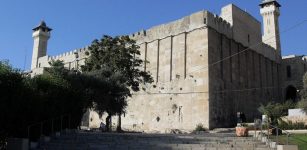 Tomb of Patriarchs In Hebron Was Used And Visited By Pilgrims 2,700 Years Ago – New Study
Archaeology | Jul 10, 2020
Tomb of Patriarchs In Hebron Was Used And Visited By Pilgrims 2,700 Years Ago – New Study
Archaeology | Jul 10, 2020 -
 From A Modest Town Jerusalem Has Evolved Into A Grand Metropolis
Archaeology | Sep 24, 2024
From A Modest Town Jerusalem Has Evolved Into A Grand Metropolis
Archaeology | Sep 24, 2024 -
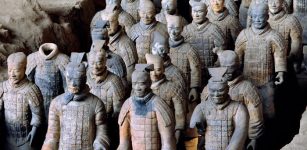 On This Day In History: Terracotta Army Buried With Emperor Qin Shi Huang Discovered – On Mar 29, 1974
News | Mar 29, 2017
On This Day In History: Terracotta Army Buried With Emperor Qin Shi Huang Discovered – On Mar 29, 1974
News | Mar 29, 2017 -
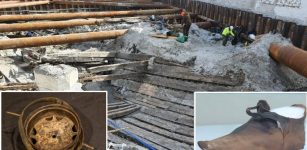 Surprising And Fascinating Finds On The Wreck Of The Lootsi Cog
Archaeology | Nov 27, 2023
Surprising And Fascinating Finds On The Wreck Of The Lootsi Cog
Archaeology | Nov 27, 2023 -
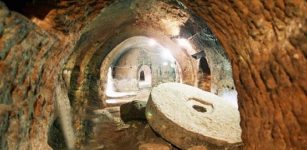 Underground Labyrinth With Secret Passages, Tunnels In Dobrogea Plateau, Romania
Featured Stories | May 9, 2022
Underground Labyrinth With Secret Passages, Tunnels In Dobrogea Plateau, Romania
Featured Stories | May 9, 2022 -
 Ancient Great City Of Napata In The Kingdom Of Kush
Civilizations | Dec 30, 2015
Ancient Great City Of Napata In The Kingdom Of Kush
Civilizations | Dec 30, 2015 -
 Enigmatic Denisovans Interbred With Modern Humans More Than Once
Archaeology | Mar 22, 2018
Enigmatic Denisovans Interbred With Modern Humans More Than Once
Archaeology | Mar 22, 2018 -
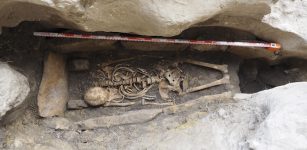 Hispano-Visigothic Grave At Ojo Guareña – Resting Place Of A Hermit Who Sought Isolation When The Moors Arrived?
Archaeology | Sep 17, 2021
Hispano-Visigothic Grave At Ojo Guareña – Resting Place Of A Hermit Who Sought Isolation When The Moors Arrived?
Archaeology | Sep 17, 2021 -
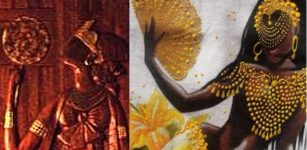 Oshun Goddess Of Yoruba People Who Brings All Things That Make Life Worth Living
African Mythology | Mar 29, 2019
Oshun Goddess Of Yoruba People Who Brings All Things That Make Life Worth Living
African Mythology | Mar 29, 2019 -
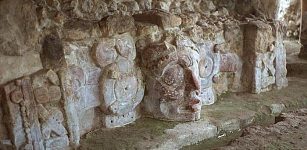 Edzna: Ancient Maya City With Sophisticated Underground System Of Canals To Control Unpredictable Floods
Featured Stories | Jun 2, 2021
Edzna: Ancient Maya City With Sophisticated Underground System Of Canals To Control Unpredictable Floods
Featured Stories | Jun 2, 2021 -
 Scientific Disagreement Over The Bronze Age Tin Ingots From The Uluburun Shipwreck
Archaeology | Sep 25, 2023
Scientific Disagreement Over The Bronze Age Tin Ingots From The Uluburun Shipwreck
Archaeology | Sep 25, 2023 -
 Why Was Grette The Strong, Icelandic Poet And Warrior Afraid Of Darkness?
Featured Stories | Sep 30, 2023
Why Was Grette The Strong, Icelandic Poet And Warrior Afraid Of Darkness?
Featured Stories | Sep 30, 2023 -
 4000-Year-Old Large Bronze Age Cemetery Discovered In Lower Silesia, Poland
Civilizations | Sep 21, 2015
4000-Year-Old Large Bronze Age Cemetery Discovered In Lower Silesia, Poland
Civilizations | Sep 21, 2015 -
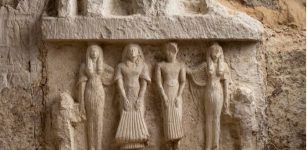 Impressive Ancient Underground Tombs And Chapels Unearthed In Saqqara, Egypt
Archaeology | Apr 16, 2023
Impressive Ancient Underground Tombs And Chapels Unearthed In Saqqara, Egypt
Archaeology | Apr 16, 2023 -
 Fenrir: Oldest Of Three Monstrous Children Of God Loki In Norse Mythology
Featured Stories | Mar 28, 2018
Fenrir: Oldest Of Three Monstrous Children Of God Loki In Norse Mythology
Featured Stories | Mar 28, 2018 -
 Mysterious Rongorongo Script Remains Undeciphered – Does It Contain A Prophetic Warning?
Featured Stories | Mar 24, 2014
Mysterious Rongorongo Script Remains Undeciphered – Does It Contain A Prophetic Warning?
Featured Stories | Mar 24, 2014 -
 Ashurbanipal – Last Great Ruler Of Assyria And His Famous Well-Organized Library
Featured Stories | Jun 21, 2021
Ashurbanipal – Last Great Ruler Of Assyria And His Famous Well-Organized Library
Featured Stories | Jun 21, 2021 -
 Mysterious Ancient Giant Jars Made By An Unknown Civilization Discovered In India
Archaeology | Mar 30, 2022
Mysterious Ancient Giant Jars Made By An Unknown Civilization Discovered In India
Archaeology | Mar 30, 2022



